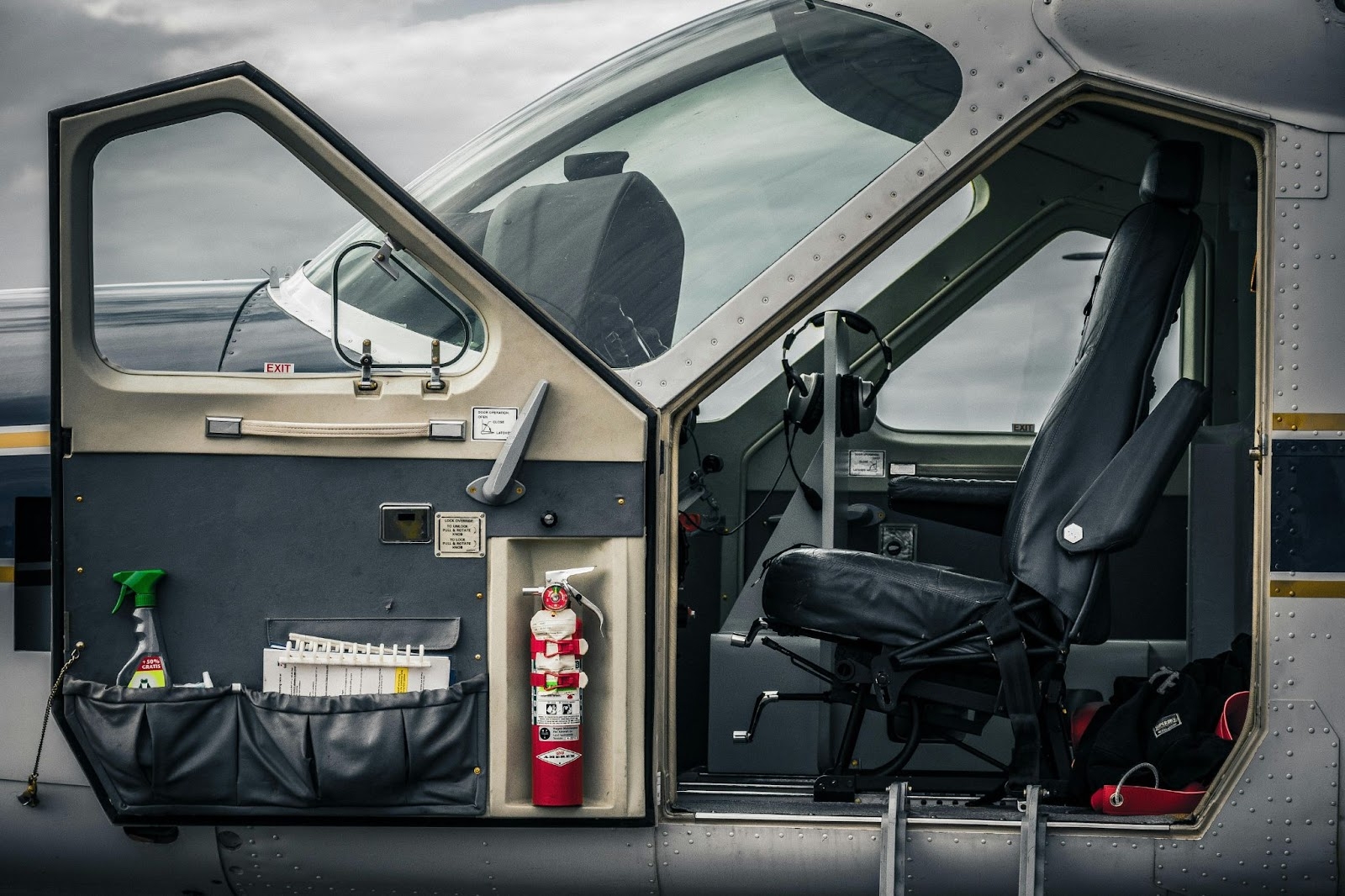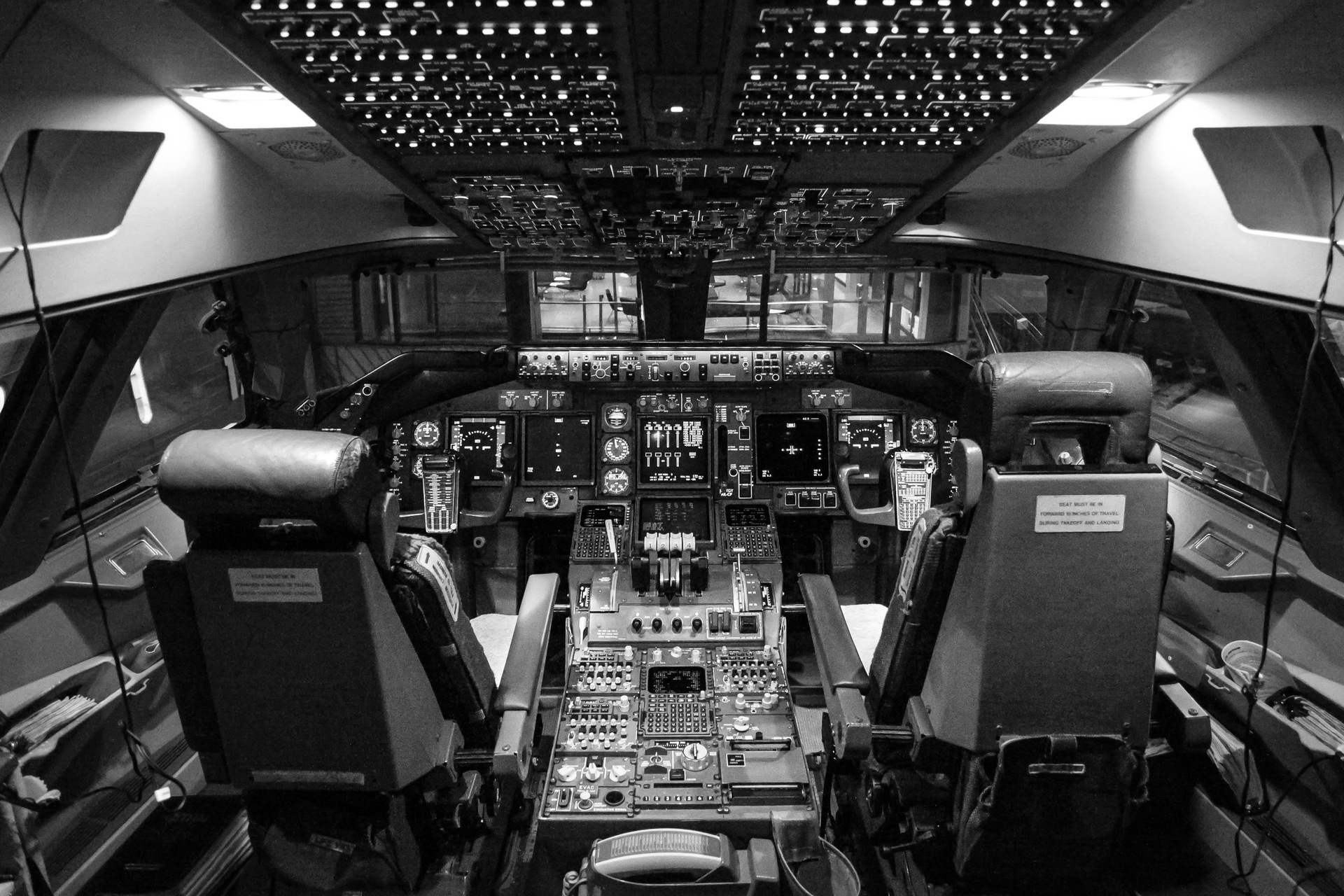
AeroGenie — Your Intelligent Copilot.
How AI-Powered Price Benchmarking Helps Aviation Procurement Teams
March 13, 2025
Aviation procurement teams face constant price fluctuations, supplier disruptions, and other roadblocks. AI-powered price benchmarking is right-tracking operations with real-time insights for cost savings and smarter negotiations. Find out how AI is reshaping procurement strategies and why leading teams are making the shift.
In aviation procurement, the buying and selling of goods is nonstop. It’s a relentless flood of purchasing, updating, replacing, salvaging, and offloading avionics and other aircraft parts.
Often, there are longstanding price agreements with select vendors, or emergent situations like AOG scenarios where price concerns seem to vanish. Neither of these approaches is optimal for aviation procurement teams.
Those with access to price benchmarking data have a major advantage. This data enables teams to lower costs for aircraft parts and maintenance services, negotiate the best rates, anticipate rising or falling prices, and better manage day-to-day workflows and vendor relationships.
Many teams, however, still rely on traditional benchmarking methods, which are time-consuming and incomplete.
Artificial intelligence (AI) is upending traditional procurement processes. With its transformative ability to analyze vast datasets in seconds and provide actionable, real-time insights, procurement teams can unlock rapid price benchmarking data that was impossible to achieve manually. Even five years ago, before AI’s proliferation, such insights were out of reach.
AI-powered price benchmarking enables aviation procurement teams to identify major cost-saving opportunities, dramatically increase procurement cycle times, and mitigate common risks associated with fluctuating pricing and parts availability.
As aviation supply chains grow more complex, AI-driven solutions are becoming basic table stakes for operational resilience. This article explores how AI-powered price benchmarking is helping aviation procurement teams streamline operations, optimize spending, and make smarter, proactive decisions that leave competitors in the digital dust.
The importance of price benchmarking in procurement
Price benchmarking allows procurement teams to instantly compare prices across various suppliers. With immediate access to historical data, you can analyze pricing trends across different industries, times of the year, geographic regions, and more.
In aviation, where margins are tight and supply chain disruptions are frequent, access to price benchmarking data is essential for controlling costs and managing risk.
Additionally, aviation procurement involves high-value components such as engines, landing gear, and avionics. Without benchmarking data, companies risk overspending on assets—wasting capital that could have been directed to other strategic long-term initiatives.
According to a report by McKinsey, organizations that leverage price benchmarking effectively can reduce procurement costs by up to 15% (McKinsey & Company).
Traditional price benchmarking relies on manually collecting and analyzing supplier quotes, past purchase records, industry reports—and “pumping” other industry insiders for info.
However, this dated approach is error-filled, tedious, and time-consuming. Purchasing decisions are often already made while you’re still scrambling to build a partial picture.
AI-powered benchmarking, on the other hand, enables procurement teams to analyze vast amounts of data in real time, identify cost trends, and make proactive decisions. As a result, you’re then well-positioned to negotiate better contracts, reduce procurement cycle times, and gain a competitive advantage in sourcing aviation components.
Additional challenges in traditional aviation procurement
Beyond having a firm grasp on pricing benchmarks, traditional procurement methods face other challenges.
- Complex supply chains: Aviation supply chains encompass numerous suppliers throughout the globe, making coordination and oversight challenging, not to mention customs, tariffs, and other supply chain management (SCM) logistics.
- Fluctuating costs: Prices for raw materials and components can vary due to resource availability and market dynamics, leading to greater budget uncertainties.
- Compliance requirements: Ensuring adherence to safety and quality standards adds complexity to procurement activities.
These further challenges can increase operational costs, delay purchase orders, and expose organizations to compliance risk.
AI-powered price benchmarking: Transforming procurement
Artificial Intelligence (AI) is reimagining the potential of what procurement teams can achieve. Through automating and enhancing price evaluation processes, AI systems can analyze and make accurate, actionable recommendations based on a near-limitless flow of real-time data.
Notably, AI-powered tools can integrate and consolidate data from multiple sources, providing a comprehensive view of market prices and trends.
Equally advantageous, AI models have powerful supplier evaluation and predictive analytics capabilities. They can evaluate suppliers based on timeliness, reliability of parts, pricing, and numerous other criteria, helping vendors objectively select the vendors that offer the best value.
In terms of predictive analytics, AI models can monitor and forecast price movement based on historical data, market trends, and geopolitical indicators, aiding teams in smarter, proactive decision-making.
Benefits of AI-powered price benchmarking in aviation
Implementing AI-powered price benchmarking offers aviation procurement teams several significant advantages:
- Enhanced decision-making: AI systems can process extensive datasets in real-time, providing up-to-date pricing information and market trends. This capability reduces the likelihood of overpaying for parts and services. AI spend analysis tools can categorize and analyze procurement data to identify areas of overspending.
- Cost reduction: AI's ability to analyze procurement data helps identify cost-saving opportunities. Organizations utilizing AI in procurement have reported an average cost reduction of 20%.
- Efficiency improvement: By automating repetitive tasks such as data collection and analysis, AI reduces manual workload and minimizes errors. In some instances, AI automation has led to a 30% increase in procurement process efficiency.
- Risk mitigation: AI continuously monitors supplier performance, contract compliance, and market conditions, allowing procurement teams to anticipate and address potential risks. This continuous monitoring enhances reliability and reduces the likelihood of disruptions.
Case studies of AI implementation in aviation procurement
Several aviation companies have successfully integrated AI into their procurement processes, yielding notable improvements:
- Predictive analytics for inventory optimization: An MRO company utilized AI-driven predictive analytics to optimize its inventory, leading to a 20% reduction in stock-related costs and a significant improvement in parts availability.
These case studies demonstrate the transformative potential of AI in aviation procurement, highlighting improvements in cost efficiency, operational effectiveness, and strategic decision-making.
Considerations for implementing AI in procurement
While AI-powered price benchmarking offers significant benefits, successful implementation requires careful planning. Procurement teams must address several key considerations:
Data quality and integration
AI models rely on accurate and comprehensive data. Poor-quality data or fragmented systems can lead to inaccurate benchmarking results. Companies must enable seamless integration between AI tools and existing enterprise resource planning (ERP) or procurement software.
Change management and adoption
Employees may be resistant to AI-driven changes, fearing job displacement or reluctance to adapt to new technology. Organizations should invest in training programs and emphasize AI’s role in augmenting human decision-making rather than replacing procurement professionals.
Security and compliance
Procurement data contains sensitive supplier and pricing information. AI implementation must align with data protection regulations for secure storage and compliance with industry-specific standards.
Balancing automation with human oversight
While AI can automate benchmarking, human expertise remains essential for interpreting insights, handling supplier negotiations, and making strategic procurement decisions. A hybrid approach—leveraging AI for analysis and humans for critical judgment—often yields the best results.
Future trends in AI and procurement
The role of AI in procurement will continue to evolve, with emerging trends shaping the industry:
- Enhanced predictive procurement: AI will shift from reactive benchmarking to predictive analytics, becoming even more adept at forecasting price fluctuations and supplier risks before they occur.
- Autonomous procurement agents: AI-powered chatbots and virtual assistants will handle negotiations and supplier communications, streamlining procurement workflows.
- Blockchain and AI integration: AI combined with blockchain technology will enhance procurement transparency, ensuring pricing data is tamper-proof and verifiable.
- AI-powered sustainability tracking: Future AI systems will assess the environmental impact of procurement decisions, helping aviation companies meet sustainability goals such as aviation’s carbon-neutral initiative while optimizing costs.
Why AI-powered price benchmarking is the future of aviation procurement
AI-powered price benchmarking has transformed how aviation procurement teams operate, enabling them to achieve cost optimization and process stability in a volatile industry.
Real-time, AI-powered data is driving the future of aviation procurement. Traditional procurement methods, reliant on manual inputs and outdated data, miss the mark. They can no longer keep up with fluctuating supplier costs, industry disruptions, global supply chains, and increasing market demand.
Many businesses are still in the early stages of AI adoption. For aviation companies looking to gain a firm foothold and outdo competitors, now is the time to explore AI solutions tailored to your unique procurement challenges.
See AI-powered price benchmarking in action. ePlaneAI offers cutting-edge AI solutions designed to help aviation procurement teams make smarter, faster, and more cost-effective purchasing decisions. Learn how AI-driven price benchmarking can transform your procurement strategy—schedule a demo with ePlaneAI today.
Aviation Maintenance Trends That May Gain Momentum in Uncertain Circumstances
Aircraft are staying in service longer, supply chains are a powder keg, and the tech is evolving overnight. Discover the maintenance trends gaining momentum and what they mean for operators trying to stay airborne and profitable.

October 2, 2025
Choosing the Right Aircraft Parts with Damage Tolerance Analysis
The future of aviation safety is all about the parts. Authentic, traceable parts bring optimal damage tolerance and performance to fleets for maximum safety and procurement efficiency.

September 30, 2025
How to Enter New Aviation Markets: The Complete Guide for Parts Suppliers
Breaking into new aviation markets? Learn how suppliers can analyze demand, manage PMA parts, and build airline trust. A complete guide for global growth.

September 25, 2025
5 Aviation Marketing Strategies You Should Use to Sell to Global Airlines
Airlines face shrinking margins and rising expectations. See how top strategies—dynamic offers, partnerships, personalization, and more—can close deals with global carriers.
